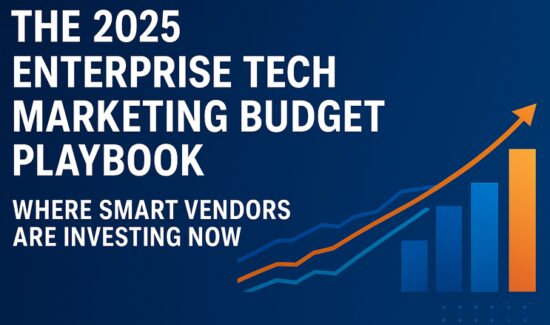Limitless Opportunities Unfolds for Brands as Third-Party Cookies Come to an End


As part of Solutions Review’s Contributed Content Series—a collection of articles written by industry thought leaders in maturing software categories—Abhinay Bhasin, the Head of Product Marketing & Strategic Account Relationships at ProfitWheel, explains why the end of third-party cookies can unlock a whole new world of opportunity for businesses.
We are about to enter a cookie-less world after facing a seemingly endless chronicle of confusion, mistakes, and setbacks. As 2023 flies by, we are getting closer to this moment, and many businesses are grappling with creating a data solution or, in the worst-case scenario, have not even prepared themselves for this upcoming cookie-less era.
Our current data situation closely resembles the era before GDPR was enforced. Initially, countless businesses failed to implement a plan in response to the EU policy. It wasn’t until after the policy went into effect and the initial hefty fines emerged that many businesses scrambled to create a compliant solution. However, in a cookie-less world, companies do not have that leisure. As soon as Google discontinues them, any business lacking a solution will experience severe adverse effects.
The value of a brand’s data comes from its insights, which is invaluable to businesses that rely on hyper-personalization to understand their consumers better. Consumers have come to expect this degree of customization, which makes data all the more valuable. However, eliminating cookies can cause much of that insight to vanish or compromise the data’s reliability. As a result, businesses have grown increasingly dependent on third-party data collected from cookies to turn first-party data into actionable insights. This data affects everything from advertising and marketing to sales solutions and product development.
Since the introduction of cookies, a lot has changed regarding how consumers use the internet and what they expect from it. However, Google’s decision to go cookie-less offers the chance to reconstruct the internet in a way that prioritizes privacy. Consumers now rightly anticipate a secure and trustworthy e-commerce atmosphere that safeguards their privacy against corporate abuse and external threats. Opting for a cookie-less approach allows brands and their loyal consumers to establish an atmosphere that cultivates those expectations while still providing the customized experiences they depend on.
Before Google’s decision, cookies were omnipresent on the internet. However, consumers have always had options to avoid invasive tracking, such as using web browsers like Firefox, going incognito, or using cookie managing tools. As we move towards 2024, it is essential to acknowledge this demand from the market. This shift offers an opportunity for data collection and analysis to develop and better align with the ever-evolving market.
While we recognize a brand’s dependency on personalized third-party data and the evolving consumer landscape that makes going cookie-less necessary, it raises questions about the next generation of consumer outreach solutions powered by data. In this cookie-less world, where does this leave brands, and how can they adapt to continue making data-informed decisions to serve their consumers better? Brands can still thrive in the cookie-less world, and the future remains promising with the right solutions.
In a cookie-less world, brands still require data to operate, but they must change their approach to gathering data. This gives brands a unique opportunity to develop permission-based marketing solutions and form new data partnerships to leverage their first-party data. This is where a hybrid of group-based and content-based data strategies can have a game-changing impact. By adopting these approaches, brands can enhance their data collection efforts and improve their ability to serve their consumers.
Unlike an identity-based solution that relies on knowing specific individuals to draw conclusions, a group (cohort)-based solution groups potential or existing consumers based on shared characteristics such as interests, behaviors, and age. This approach protects anonymity and allows a larger pool of individuals to be targeted by a specific campaign. Additionally, a group-based solution enables brands to amplify their first-party data with third-party sources without relying on cookies for accuracy. As a result, this approach provides a more privacy-first solution for brands to continue to reach their audience with targeted marketing.
A brand can create a robust data solution by combining consumer groups with content analytics. This approach involves using AI-powered analytics and natural language processing to understand the context of a website or other online media in real-time and identify correlations with pre-defined target groups. This guarantees that the right marketing approach is applied to each online location a consumer visits without invading their privacy. Using this approach, the consumer and the brand benefit from more personalized experiences.
By transitioning away from a cookie-based system, brands can now apply techniques that collect critical data in a non-invasive way that respects the privacy of their consumers. Additionally, they can incentivize consumers to share their information in a privacy-first approach. Although consumers are concerned about their privacy being compromised online, they appreciate the customized perks that come along with personalized data. By adopting a system that prioritizes the confidentiality of personal data while encouraging individuals to share their valuable market insights, brands can create a solution that benefits everyone.
As 2024 approaches, the transition into a cookie-less world makes it critical for brands to have a plan. While most brands have been aware of this upcoming shift, some may have played the wait-and-see game before planning a cookie-less solution, partly due to Google’s frequent delays in announcing an actual date and their overall game plan.
Now that Google, Apple, and Meta have released their guidelines for a cookie-less world, brands can no longer afford to procrastinate. Adopting a new data solution that doesn’t rely on third-party cookies will take time. Brands should allow at least 6-12 months to completely overhaul and modernize their technology stack for the cookie-less era ahead. Although there is still time for brands that have taken the first move—they must act now.
First, brands must search for cohort-based options to enhance their first-party data. They already have an abundance of data from their existing consumers. To make this first-party data as useful as it was in a cookies-based era, they need to strengthen it with up-to-date third-party data sources that are less invasive than cookies. Afterward, brands should apply the correct content data solution to achieve their desired outcomes.
To truly understand consumers, brands must lean on their first-party data. Brands should aim to understand their consumers beyond just what and when they purchase but also how they relate to the world. By strengthening their first-party data with the help of strategic partners/vendors, brands can learn the best approach to engaging with consumers and prospects. They can captivate consumers’ attention without relying on cookies in a privacy-first and non-invasive way.
Brands should view the end of third-party cookies as an opportunity to establish a stronger and longer-lasting relationship with their consumers and prospective consumers. To cater to the dynamic demands of a constantly changing demographic, brands should develop a data solution that prioritizes the consumer’s needs and improves how and when they are approached. This approach should be tailored to address the consumer’s needs while protecting their privacy.





















